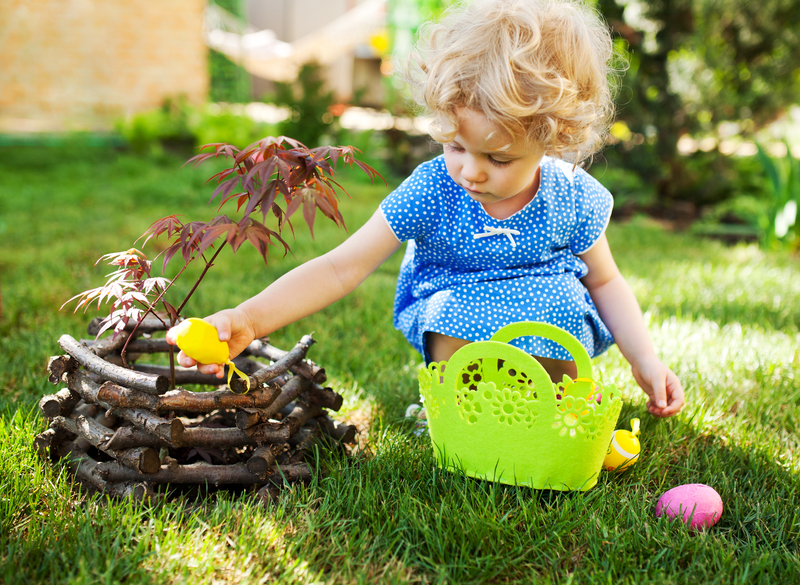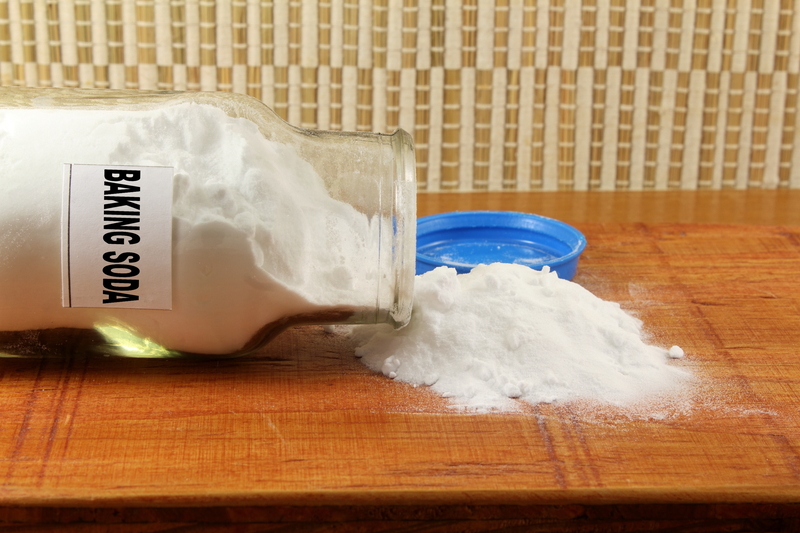Say Goodbye to Stovetop Burnt-on Residue with These Tips
Posted on 07/09/2025
Say Goodbye to Stovetop Burnt-on Residue with These Tips
If your stovetop is covered in stubborn, burnt-on residue, you're not alone. Gunky, black stains, sticky messes after a boil-over, and food remnants are a common plague in even the most careful kitchens. But fret not--this comprehensive guide will walk you through how to remove burnt-on residue from your stovetop with ease, shining a light on ingenious tips, eco-friendly cleaning hacks, and methods that prolong your appliance's life. Prepare to say goodbye to unsightly marks and enjoy sparkling clean cooking surfaces!

Why Does Burnt-on Stovetop Residue Happen?
Before diving into stain-busting solutions, it's helpful to understand why stovetops acquire burnt-on residue in the first place. Several factors contribute:
- Spills: Bubbles and overflows while boiling or frying can quickly char on a hot surface, becoming a stubborn patch.
- High Heat Cooking: Using excessive heat leads to oils and food splattering, which then burns onto the stovetop.
- Delayed Cleaning: Allowing spills or splatters to cool and harden makes removal more challenging.
- Incorrect Cleaning Products: Sometimes, the wrong cleaner (or not enough cleaning at all) leaves behind tough stains.
The key is to act swiftly and use compatible cleaning agents for your stovetop's surface.
Understanding Your Stovetop Type
Not all stovetops are created equal. There are mainly four types, and the optimal cleaning method can vary:
- Gas Stovetops: Feature grates and removable burners--highly durable but require thorough cleaning in crevices.
- Electric Coil Stovetops: Easy to lift coils, but their drip pans catch (and sometimes bake-on) messes.
- Glass or Ceramic Stovetops: Sleek and stylish, but scratches and visible residue are common concerns.
- Induction Cooktops: Flat and easy to wipe but sensitive to abrasive tools and certain cleaners.
*Always check your manufacturer's recommendations before using a new cleaning method!*
Safety First: Essential Tips Before Cleaning
- Turn off and unplug the appliance (if applicable). Never clean a hot or plugged-in stove.
- Allow the surface to cool completely to prevent burns.
- Ventilate the area if using strong cleaning agents.
- Wear gloves when handling chemicals or abrasive pads.
_Now, let's roll up our sleeves and banish that nasty burnt-on residue for good!_
How to Remove Burnt-on Residue: Step-by-Step Methods
Basic Method for Daily Messes
Regular cleaning keeps grease and stains at bay. Here's a daily stovetop cleaning routine that helps prevent stubborn build-up:
- Let your stovetop cool down completely.
- Wipe the surface with a soft, damp cloth or microfiber towel.
- If you notice any sticky spots, use a drop of dish soap in warm water.
- Rinse with a clean, wet cloth and dry thoroughly to avoid streaks or water spots.
- Repeat after every meal preparation for best results.
Baking Soda Paste for Tough, Burnt-on Spots
This eco-friendly method is stellar for removing burnt-on stains from your stovetop--especially glass, ceramic, or smooth-top ranges. Baking soda acts as a gentle abrasive, lifting grime without scratching.
- Mix a paste: Combine 1 part baking soda with 1 part water until it forms a thick paste.
- Apply the paste directly to the burnt-on area. Use your fingers or a soft cloth.
- Let it sit for 15-30 minutes to break down the grime.
- Gently scrub with a non-abrasive sponge or soft brush, using circular motions.
- Wipe clean with a damp towel and repeat if needed.
- Dry the surface thoroughly to prevent streaking.
Vinegar Power: Cutting Through Burnt Grease
White vinegar is a powerhouse when it comes to removing burnt-on grime from stovetops. Its acidity dissolves grease, making it ideal for glass, ceramic, or metal surfaces.
- Spray white vinegar generously over the burnt-on residue.
- Allow vinegar to fizz and sit for 15-20 minutes.
- Wipe the area with a damp cloth, applying gentle pressure on tough spots.
- Rinse and repeat if necessary for stubborn stains.
Tip: For extra cleaning power, combine baking soda with vinegar. The fizzing reaction helps lift stubborn dirt!
Commercial Cleaners for Stubborn Residue
Sometimes, burnt-on stains require the strength of a store-bought stovetop cleaner. Look for products specifically formulated for your stovetop type:
- Glass and ceramic cooktop creams for smooth surfaces.
- Degreasers for gas or electric stoves (avoid harsh abrasives).
Follow all label instructions and test in a small area first. Always wipe away cleaner residues completely before using your stove.
Razor Blade Scraper (for Glass and Ceramic Tops Only)
When gentle methods aren't enough, a razor blade scraper (used with care) can be useful for glass and ceramic stovetops:
- Hold the blade at a *45-degree angle* to the surface.
- Gently scrape the burnt residue, working with steady, even strokes.
- Wipe away loosened debris promptly.
- Always check your manual to ensure your model is safe for scraping.
_Never use razor blades on gas grates, electric coil burners, or induction cooktops!_
Heavy Duty Cleaning for Gas and Electric Stovetops
Grates, burners, and drip pans attract burnt residue. Here's how to clean them:
- Soak removable parts (grates, drip pans, burner covers) in hot, soapy water for at least 30 minutes.
- Scrub with a stiff brush or non-abrasive pad.
- Tackle stubborn grime with a paste of baking soda and water, applying more elbow grease as needed.
- Dry thoroughly before reassembling.
Eco-Friendly & DIY Stovetop Cleaning Hacks
For those looking to avoid harsh chemicals, several natural DIY stovetop cleaners are both safe and effective:
- Lemon Juice: The citric acid in lemon works like a natural degreaser. Rub half a lemon directly on stains, wait 10 minutes, then wipe clean.
- Salt and Baking Soda: For coarse scrubbing, mix equal parts salt and baking soda. Sprinkle on the residue and rub gently with a damp cloth.
- Steam: Fill a pan with water and bring it to a boil atop the burnt spot (for coil or gas stoves). The steam loosens up stubborn debris, making it easier to wipe away.
These non-toxic methods protect your family and the environment while leaving your stovetop spotless!
Stovetop Burnt-on Residue Prevention Tips
How to Keep Your Stovetop Clean Longer
- Wipe spills immediately: The sooner you act, the easier cleanup will be. Use a damp cloth on cooled surfaces, or paper towels for quick spills.
- Use splatter screens: When frying or sauteing, a splatter guard contains oil droplets and food particles.
- Clean as you cook: If safe, wipe up minor messes while preparing meals so they never have the chance to bake on.
- Match pot size to burner: Prevent overflow by using the correct-sized pan for your burner.
- Perform a deeper clean weekly: A thorough, regular clean prevents buildup, meaning less scrubbing needed long-term.
*An ounce of prevention is worth a pound of cure when it comes to stovetop cleaning!*
The Bottom Line: Efficient Solutions for a Pristine Stovetop
Burnt-on residue can make even a brand-new kitchen look unkempt, but you do not have to live with it. By following the stovetop burnt-on residue removal tips above, you can quickly restore shine, eliminate odors, and protect your appliance from damage. From baking soda and vinegar magic to safe scraping and preventative practices, you'll have a toolkit of approaches for any spill.
The next time you face a scorched patch or sticky layer on your cooker, revisit these comprehensive cleaning methods and say goodbye to burnt-on residue on your stovetop for good!

Frequently Asked Questions: Stovetop Burnt-on Residue Cleaning
Can I use steel wool or abrasive pads on my stovetop?
No. Avoid steel wool on almost all stovetops except some cast iron grates, as it can scratch and dull your surface. Stick to soft sponges, microfiber cloths, or specialty cooktop cleaning pads.
Is it safe to clean my stove's burners and grates in the dishwasher?
Only if your manufacturer's guide says it's safe. Many modern parts are dishwasher-safe, but older or enameled pieces may rust or discolor. Always check first!
How often should I deep clean my stovetop?
For best results, wipe spills daily and deep clean once per week (or more often if you cook frequently or fry often).
What is the best stovetop cleaner for burnt-on residue?
The best cleaner depends on your stovetop type. Baking soda, vinegar, and gentle cooktop creams are usually effective on glass and ceramic tops, while soap and degreasers work well for gas and electric models.
Conclusion: Your Path to a Spotless Stovetop
With the right tools, tips, and regular care, stubborn stovetop burnt-on residue will be a thing of the past. Integrate these expert-approved methods into your routine and enjoy a clean, welcoming kitchen every day.
Ready to say goodbye to stovetop burnt-on residue? Begin today with these simple steps and keep your kitchen shining bright!




